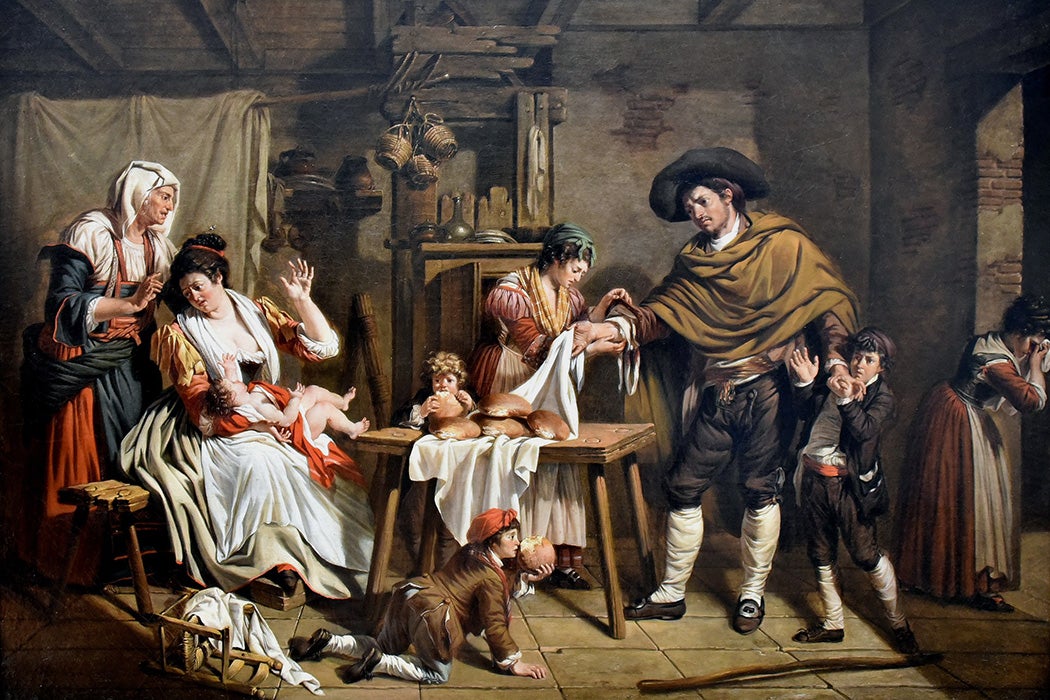Food inflation isn’t a new problem. Centuries ago, the rising cost of basic essentials generated just as much grief and outrage as it does in our troubled economic times, if not more. In eighteenth-century France, too-expensive and too-scarce flour was the base ingredient for what would become one of history’s bloodiest uprisings and revolutions.
In 1775, the king of France was Louis XVI. One of his unofficial titles was “the first baker of France,” representing his sacred responsibility to ensure that his people always had food to eat. At this, he failed miserably. By most accounts, he was a painfully introverted and feeble-minded monarch dominated by his overbearing and out-of-touch ministers. Louis’s Controller-General of Finances, Anne Robert Jacques Turgot, placed grossly inflated prices on the country’s diminished wheat supply after a devastatingly bad harvest. What followed was a massive wave of anarchistic, violent clashes with local authorities and lootings known as the guerre des farines, or the Flour War. Some were spontaneous, some were organized. Historian Cynthia Bouton calculates that there may have been around three hundred recorded riots, but the tally is uncertain, as there were so many, and they were so chaotic.
There’s a popular myth that the protests surrounding flour scarcity were enacted primarily by furious women who couldn’t feed their families. Social historian E. P. Thompson, for instance, persuasively argued this point in his well-known article “The Moral Economy Economy of the English Crowd in the Eighteenth Century.” But though this fury existed, and lower-class women did actively participate in the events leading up to the French Revolution, more recently historians have emphasized that hunger was (and still very much is) a gender-neutral issue.
Historian Lynne Taylor, drawing on Bouton’s research, notes that though many women did participate in eighteenth-century food riots, “the numbers of men involved had increased significantly in the Flour Wars due to the changing male economic, social (including familial) and political status during the Ancient Regime.”
Weekly Newsletter
Bouton further argues that cooperation between men and women in the Flour Wars unintentionally set the entire tone of the French Revolution. When women are willing to take on masculine violence and men are willing to serve as backup to women’s uproar, there arises a real threat to an established monarchy. The common people forcefully push through change when a king and his government refuse to do so:
“That so many men swelled the protesting ranks in 1775 and played prominent roles suggests a changing outlook,” writes Bouton,
and indeed the explanation for this male behavior lies in a deteriorating male status among the menu peuple that subjected them to concerns similar to those of their wives, sisters, mothers and daughters. Men were prepared to face massive repression from authorities who saw them as politically more dangerous than women even as their precarious material and social conditions drove them to embrace traditional female responses to a subsistence crisis.
It was desperate hunger that really drove the French population to revolt and successfully topple their king, not politics and ideals. Marie Antionette, Louis’s unfortunate queen, may not have really said “Let them eat cake,” but her unhappily adopted citizens spoke loud and clear. The people must be fed before anything else.
Support JSTOR Daily! Join our membership program on Patreon today.







